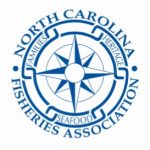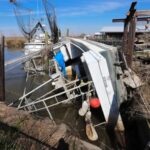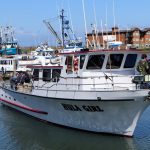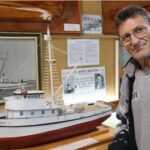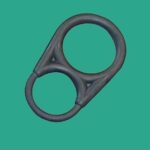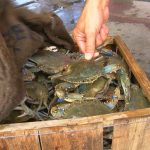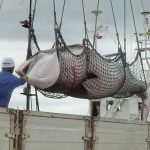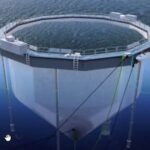Tag Archives: Southeast Alaska
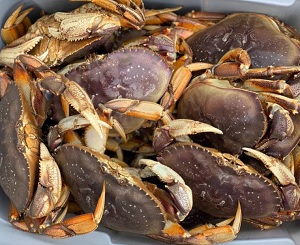
Southeast’s commercial Dungeness crab summer season the second highest on record
Commercial salmon fisheries in Southeast are looking to be a bust this year, but that’s not the case for Dungeness crab. This summer’s harvest ended up being the second highest on record. But the value of the fishery was not near a record breaker. Fishermen brought in 5.81 million pounds of crab in a commercial season that ran from mid-June to mid-August. Joe Stratman leads crab management in Southeast for the Alaska Department of Fish and Game. “What was taken this summer is more than double the previous ten year average,” he said. >click to read< 11:40
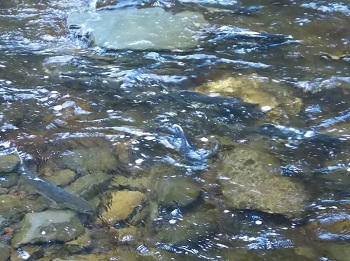
Southeast Alaska pink salmon catch could be lowest in 44 years
Two years ago the commercial catch of pink salmon in Southeast Alaska hit its lowest level in more than four decades. This year’s catch will be even lower. Andy Piston is the department’s pink and chum salmon project leader for Southeast. He said the catch by late August had topped six million fish and is expected to finish around seven million pinks by the end of the season. “It looks like it’s going to come in a little below the 2018 parent year harvest which was about 8.1 million and that’ll be, it’ll be one of the lowest harvests since the mid-1970s. >click to read< 09:36
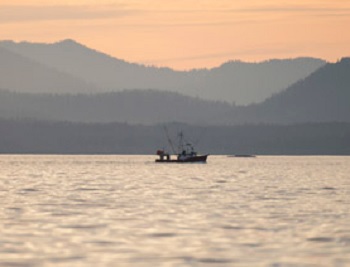
8 Day Southeast Trolling Shutdown to Start Friday
Southeast Alaska’s commercial troll salmon fishery will close for eight days, starting Thursday, due to low abundance of coho salmon, state Fish and Game officials announced today. The fishery will reopen August 15, they said. “The point of the closure is to try to move fish to the inside,” said ADFG Commercial Troll Management Biologist Grant Hagerman. “They’re not being exploited, they’re passing through the fishery… You’ve got this eight-day closure based on the below average (coho) catch rates and below average returns.” Hagerman said coho catches were low in all six trolling areas. >click to read< 10:07
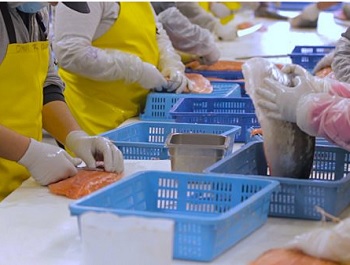
Juneau processor sanitized, screened, quarantined but Coronavirus still got in
On July 4, a Juneau resident who works at Alaska Glacier Seafoods started showing COVID-19 symptoms. He quarantined at home immediately and got tested. “Unfortunately, you can be contagious for days prior to showing symptoms,” said Jim Erickson, vice president and co-owner of the company. “That’s what makes this disease so hard to get in front of.” Health officials who investigated the case say it resulted from community spread — not from inside the plant. “We’re not sure where he contracted it initially, because he’s probably not sure,” Erickson said this week. “I mean, let’s face it, you could pick it up anywhere.” >click to read< 15:10
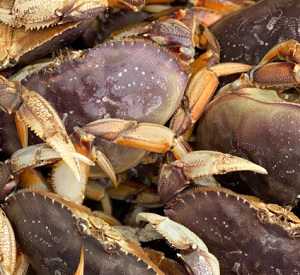
Southeast Alaska Dungeness crab catch starts strong again, price drops
It’s not as large as last year’s haul. But the catch from the first week of the fishery has topped 960,000 pounds and is expected to increase with additional landings from that first week still to be tallied. Effort is down substantially. Only 119 permit holders landed crab in that first week, compared to 170 in that first week last year. The recent average is 147 permit holders landing crab. The average price has also dropped from last year. It’s around $1.72 a pound compared to $2.97 a pound in 2019. >click to read< 13:17
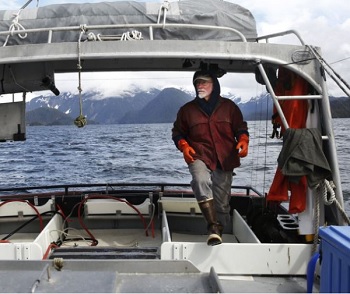
A win for Alaska trollers – Judge denied request for injunction to keep season closed
Magistrate Judge Michelle Peterson, of the US District Court of Western Washington, ruled on Tuesday (6-9-20) that an injunction petition filed by a Washington state environmental organization to protect killer whales circumvents established fisheries law. During oral arguments before her in May (5-28-20), Judge Peterson put hard questions to counsel for the Wild Fish Conservancy about whether the federal court had jurisdiction over the case, when the matter had not been tested before the Alaska Board of Fisheries, or the National Marine Fisheries Service — organizations which have regulated fisheries for the last four decades under the overall umbrella of the Magnuson-Stevens Act. So Judge Peterson’s ruling wasn’t unexpected. Nevertheless Kurt Beardslee, executive director of the Conservancy, says he’s disappointed. >click to read< 08:14
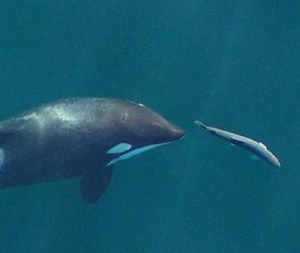
Judge weighs shutting down Southeast Alaska Chinook fishery
Fishermen in Southeast Alaska could see their season cut short if a federal judge issues an injunction requested by a Washington environmental group to protect the food supply of a subpopulation of orcas. The Wild Fish Conservancy filed a lawsuit against NOAA,,, “We are getting blamed for harvesting their food source, which really isn’t the cause of the problem,” Amy Daughery, executive director of the Alaska Trollers Association said. “The problem as we see it, is the exponential population growth in Seattle, which has lead to a lot of toxicity and pollution and habitat loss in that area. And so these whales are really struggling, this one population. The Northern killer whales that we see off the coast of Southeast Alaska are doing very well. In fact they’ve increased.” >click to read< 10:19
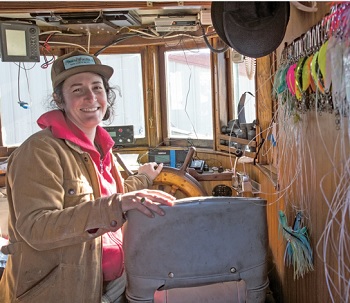
Port Townsend: Captain Kat Murphy fishes to feed her community
She likens it to “chasing wild herds of buffalo.” On her 38-foot wooden power troller, “Grace,” and with one other crewmember, Murphy spends her days trolling for salmon—a fishing method that leads her through sparkling waters buffeted by Alaska’s rocky coastlines and small towns. “We’re the wandering trollers,” Murphy said. “Because of our gear type, we’re not limited to these tiny areas.” Off the coast of Baranof or Kruzof or Coronation islands, in the offshore waters of Southeast Alaska, power trollers like Murphy’s “Grace” run high-tension wires weighted with lead balls off hydraulic gurdies from various locations on their boats. The four lines on her boat are interspersed with glittering lures and hooks to attract the wild salmon. >click to read< 10:30
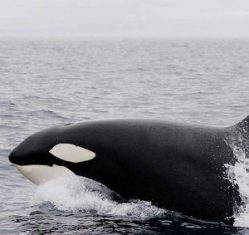
SE Alaska Chinook controversy attracts more user groups
A controversy over whether NOAA Fisheries is properly managing Chinook salmon stocks in Southeast Alaska, with consideration for a hungry whale population in decline, has been joined by sport and charter fishermen who say Alaska is not the problem. The environmental organization SalmonState, along with the Alaska Longline Fishermen’s Association and Alaska Trollers Association said on Monday, April 27, that sport and charter harvesters have joined them in support of NOAA Fisheries in a lawsuit brought by Wild Fish Conservancy, of Duvall, Washington. The group characterizes as misguided the decision of WFC to sue NOAA Fisheries in federal court to halt Chinook salmon trolling in Southeast Alaska effective July 1. >click to read< 16:15

Trollers side with NMFS in Chinook litigation – Endangered whales compete with increasing populations of seals, sea lions
Litigation to halt the Southeast Alaska king salmon fishery to provide sustenance for Southern Resident Killer Whales is prompting commercial trollers to intervene in the lawsuit brought by the Washington state based Wild Fish Conservancy. The Alaska Trollers Association in Juneau voted on Tuesday, April 21, to insert itself into the defense of the lawsuit filed in mid-March against the National Marine Fisheries Service and the subsequent injunction against king salmon fishing and the troll fishery specifically. >click to read< 15:41
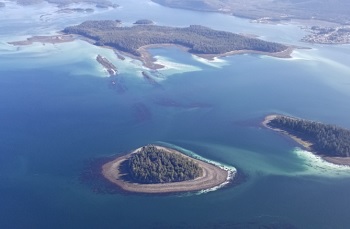
Herring spawn setting new records near Craig
Herring are spawning in a big way near Craig on Prince of Wales Island in southern Southeast Alaska. The Alaska Department of Fish and Game reported 30 nautical miles of active spawn observed near Craig on Friday, April 10. That’s the largest single-day active spawning event on record for the area. And it beats the record set the day before, Thursday, a day that saw over 25 nautical miles. The area has a spawn on kelp commercial fishery underway. Fisherman catch herring and release them in floating net pens, called pounds. Those fish then lay eggs on kelp suspended in those pounds. The herring eggs and kelp are harvested together and sold. >click to read< 07:23
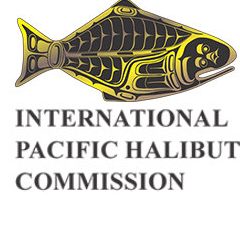
International Pacific Halibut Commission cuts 2020 harvest levels for US waters
Amid ongoing stock declines and concerns about commercial bycatch, the International Pacific Halibut Commission opted to cut allocations in Southcentral and Southeast Alaska for 2020.,, U.S. Commissioner Chris Oliver said he recognized that there maybe some dissatisfaction on the U.S. side,, Canadian Commissioner Peter DeGreef said he objected to the level of fishing intensity as well, saying that without a cut,,, >click to read< 10:06
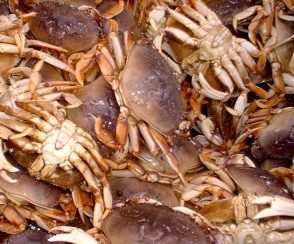
2019 was highest value year on record for Dungeness crab in Southeast Alaska
5.3 million pounds of Dungeness crab were harvested, which is the third highest harvest on record. Yet, the price averaged $3.07 a pound making it the highest valued season ever recorded for Southeast. The previous record for the most valuable year was in 2002. Seven million pounds were harvested but the price was only $1.25 per pound back then. >click to read< 18:54
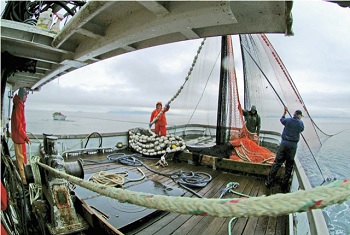
FISH FACTOR: First checks finally set for 2016 pink salmon disaster
It’s been a long time coming but payments should soon be in hand for Alaska fishermen, processors and coastal communities hurt by the 2016 pink salmon run failure, the worst in 40 years. Congress OK’d more than $56 million in federal relief in 2017, but the authorization to cut the money loose languished on NOAA desks in D.C. for more than two years. The payouts got delayed again last October,,, >click to read< 17:18
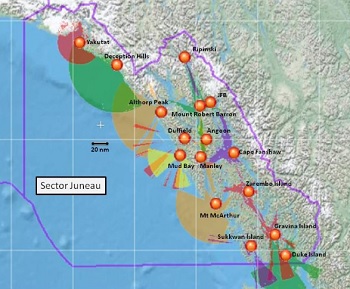
Coast Guard notes communications dead zones in Southeast
The U.S. Coast Guard has released a list of communications towers in Alaska that may not be receiving VHF radio broadcasts and is warning mariners to bring back up communications systems. Seven of the problem towers are in Southeast Alaska, including Zarembo Island and Cape Fanshaw near Wrangell and Petersburg, two towers in southern Southeast near Ketchikan and Prince of Wales Island, along with sites near Sitka and Pelican. Those are dead zones where the Coast Guard won’t be able to hear distress calls on emergency channel 16. >click to read< 08:17
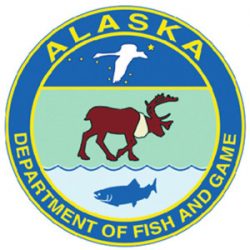
Rockfish closure another blow to Southeast fleet
Southeast Alaska fishermen won’t get to target yelloweye rockfish in 2020, and that’s another notch in tightening belt for the area fleet. The Alaska Department of Fish and Game announced the full-year closure on Dec. 31, spanning both the commercial and recreational sectors. Targeted fishing for all nonpelagic rockfish, which includes species like yelloweye, quillback, tiger and china rockfish, will be closed across the region due to declining populations of the fish. >click to read< 11:00
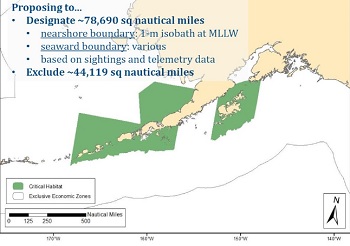
Southeast Alaska fishermen unite against designating critical habitat for humpback whales
Fishermen from different gear groups united against a proposed federal rule to designate Southeast Alaska as critical habitat for humpback whales. About 60 people crowded into the Petersburg borough assembly chambers and others overflowed into the hallway. Most were fishermen from Petersburg, Wrangell, and Ketchikan.,, They had the same message for the federal government. They don’t want Southeast labeled critical habitat for whales. >click to read< 13:00
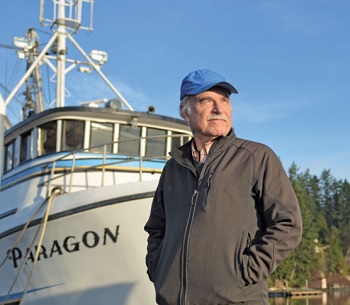
Randy Babich has been fishing Puget Sound and southeast Alaska for 54 years. A lot has changed in that time.
The Paragon is a 56-foot commercial purse seiner moored at Longbranch Marina, a seagoing workhorse that dwarfs the pleasure boats around it. “I was going to be a dentist,” said the owner, Randy Babich, who just turned 70. “I went through pre-med, pre-dent. My dad always said, ‘Get into a profession.’ ” Babich grew up in Gig Harbor and “got into fishing because my family was into fishing,” >click to read< 07:16

Southeast Alaska fisherman pleads guilty to illegally harvesting $35,000 worth of sea cucumbers
A Southeast Alaska commercial fisherman has been convicted for his role in illegally harvesting nearly 7,500 pounds of sea cucumbers near Prince of Wales Island. Jonathan McGraw Jr., of Naukati Bay, pleaded guilty to fishing in closed waters and providing false information on a harvest report. Both are misdemeanors. In 2018, McGraw and two others were charged with illegally fishing in a scientific preserve near Whale Pass. That area has been closed to fishing since the 1980s. >click to read< 21:13
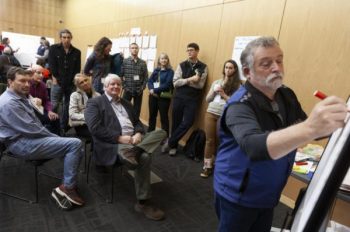
Solutions sought to ease conflicts over Southeast Alaska’s rising sea otter populations
A hundred years ago, the fur trade wiped out sea otters in Southeast Alaska. They were reintroduced in the 1960s with 412 animals brought from Amchitka Island and Prince William Sound. Since then, they’ve done really well. The last official estimate in 2012 shows that there are more than 25,000 of them. But their success has changed their environment as they’re a keystone species. “Many of those effects are really disruptive to the existing, you know, commercial activities like shell fisheries that have developed.” >click to read< 07:57
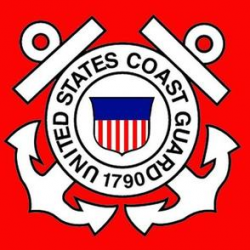
Coast Guard confirms serious problems with channel 16
By the time the U.S. Coast Guard issued an alert in mid-October about VHF-FM radio outages throughout Southeast Alaska, word had already spread through the commercial fishing fleet from harvesters worried that mayday calls might go unanswered. “I don’t think the fleet is aware of how severe of a problem this is,” said Jeff Farvour, a commercial harvester from Sitka. “Fishermen usually feel the Coast Guard is on to these things. It doesn’t look like it’s going to be fixed any time soon.” >click to read< 15:11

Coast Guard experiencing VHF-FM radio outages throughout Southeast Alaska, reminds public of secondary means of emergency communication
Coast Guard Sector Juneau personnel are experiencing multiple VHF-FM radio outages throughout Southeast Alaska and may not be able to hear or respond to distress calls on channel 16. Currently, waterways affected by Coast Guard VHF-FM radio site outages include the Gulf of Alaska between Yakutat and Sitka, Cross Sound, Peril Strait, Hoonah Sound, Southern Chatham Strait, Sumner Strait, the waters surrounding Zarembo Island and the west side of Prince of Wales Island. >click to read< 20:38
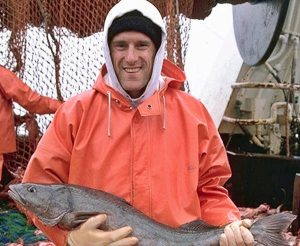
Sablefish season to open with slight increase, along with uncertainty
Alaska’s sablefish fishermen will go into the 2019 season in March with no change to their overall catch limit but some debate about the state of the stock. Sablefish, also known as black cod, regularly opens to fishing in Alaska in March, at the same time as the halibut fishery. Commercial fishermen in the Bering Sea, the Gulf of Alaska and Southeast Alaska catch them using trawls, longlines or, in some areas, pots. Fishermen landed about 13,956 metric tons of them last year between the Gulf of Alaska and the Bering Sea/Aleutian Islands fisheries. >click to read<19:55

2018 Dungeness crab fisheries in Southeast Alaska best in years
The commercial fishery for Dungeness crab in Southeast Alaska was cut short in 2017 because harvests were low. 2018, however, has proven to be one of the best years in the last decade. It takes a while to compile all the data from Southeast’s Dungeness crab fishery. The fall fishery closed November 30 for the most part but a few areas remain open and data is still coming in.But the major areas were fished for two months and preliminary results are pretty positive. >click to read<21:33
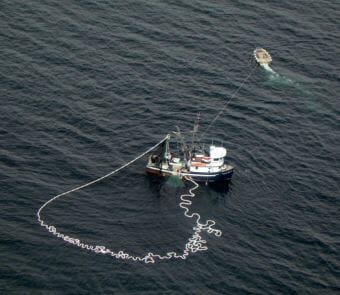
New warm ocean Blob could affect Southeast winter weather, fisheries
The Blob could be back. Or, maybe it’s the Son of Blob. Either way, the warm water phenomenon first discovered in the North Pacific five years ago is slowly reemerging in the Gulf of Alaska. Although it doesn’t appear to be as strong as the original, it could still affect weather and fisheries in Southeast Alaska. Nick Bond is the Washington state climatologist who coined the name “the Blob” when he discovered the original patch of warm water emerging in late 2013. “For the Gulf of Alaska, I would say it’s mostly, if not entirely new,” Bond said. “It might be a little bit of a different story for the Bering Sea.” >click to read<
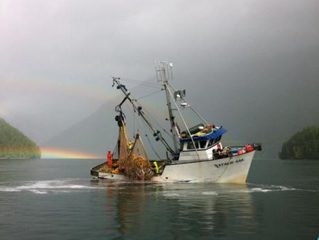
Hatchery salmon help Alaska avert fishery disaster
Around mid-August this year, the fishing season in Southeast Alaska looked grim. Some areas had posted the lowest pink salmon landings since the 1970s, and the total pink catch would end up at just around 70 percent of the paltry 23 million fish forecast. For comparison, the 18 million pinks caught in 2016 prompted a disaster declaration from the federal government. But at the end of August, something unexpected happen. Hatchery chum salmon from the National Southeast Regional Aquaculture Association (NSRAA) remote release site at Crawfish Inlet, 40 miles south of Sitka, returned in unprecedented numbers, providing a massive shot in the arm for the industry. >click to read<16:38
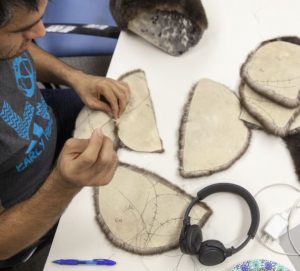
Otterskin sewing workshops promote ‘sustainable cottage industry’ in coastal Alaska
A series of workshops in communities around Southeast Alaska aims to expand the practice of traditional Alaska Native skin-sewing with seal and sea otter fur.,,, In the last few decades, things have been looking up for sea otters in Southeast Alaska. The last official count put their number well over 25,000 and growing. “It’s a very thriving population growing probably 10 to 12 percent a year,” Lee Kadinger said. “The otters are starting to show up more around Ketchikan now, so we got to start getting rid of them. They kill all our crab, and I love crab,” Leask said. “There’s got to be a little bit of population control.” >click to read<11:56
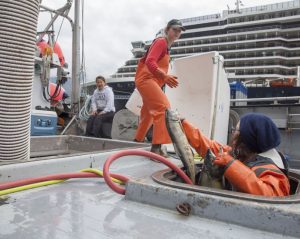
The mysterious case of Alaska’s strange sockeye salmon returns this year
There’s something unusual going on with the sockeye salmon runs returning to Alaska this year. In some places — like Bristol Bay — the runs are strong. In others, like the Copper River or the Kenai River they’re unexpectedly weak. In some places, there are sockeye that are unusually small. In others, sockeye of a certain age appear to be missing entirely. It’s a mystery. In Southeast Alaska, one of the first Fish and Game staffers to notice an unusual trend was Iris Frank, a regional data coordinator and fisheries technician. Frank’s lab is on the first floor of Fish and Game’s Douglas Island office that looks like it hasn’t changed much in the 32 years since she got there. >click to read<18:06
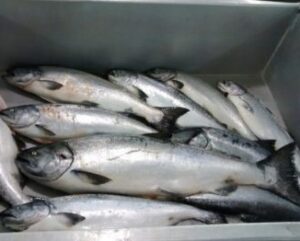
Southeast Alaska commercial troll summer king season opens July 1
Southeast Alaska’s commercial salmon trollers open their summer season for king salmon July 1st with a harvest target of 53,800 Chinook. The fleet is expected to catch that in a short opening. That’s after low catches and restricted fishing for kings this spring. The first summer opening is expected to last four or five days and will be managed in-season. That means the Alaska Department of Fish and Game will announce a closure once the catch nears that harvest target. Grant Hagerman is the department’s troll management biologist for Southeast and says fishing in the spring season has been slow. Audio report, >click to read<17:06
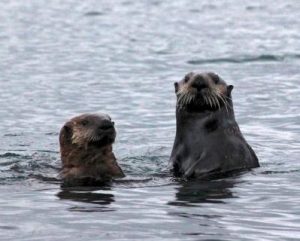
Alaska Dive Fishermen Plead for Relief from Sea Otters
Phil Doherty, head of the Southeast Alaska Regional Dive Fisheries Association, is working to save the livelihood of 200 southeast Alaska fishermen and a $10 million industry but faces an uphill struggle against an opponent that looks like a cuddly plush toy. Fishermen have watched their harvest shrink as sea otters spread and colonize, Doherty said. Divers once annually harvested 6 million pounds (2.7 million kilograms) of red sea urchins. The recent quota has been less than 1 million pounds (454,000 kilograms). “We’ve seen a multimillion-dollar fishery in sea urchins pretty much go away,” he said. >click to read<12:46

































